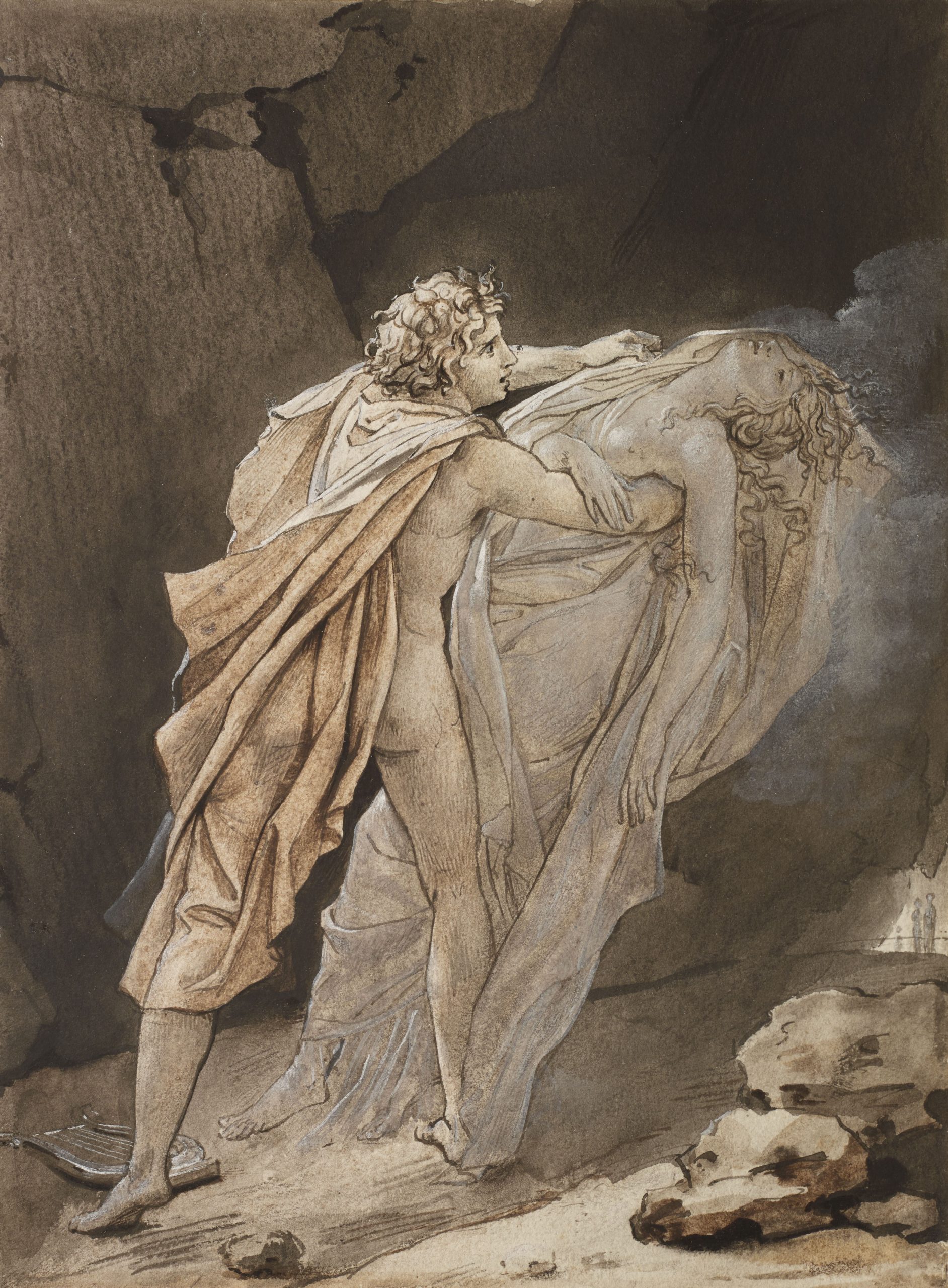FRANCOIS PASCAL SIMON GERARD, CALLED BARON GERARD
1770 – Rome – 1837 – Paris
Orpheus Holding Eurydice
(The Georgics, Canto IV)
Pen and wash of India ink and bistre ink, watercolour and whit gouahce
210 x 155 mm.
Circa 1791.
Provenance:
Firmin Didot (1764–1836), his sale 1810 or (1814?); Charles Rollin (numismatist); by descent, the Borgella collections, then the Devillez, in Brussels; Jean Jadot (collector‘s stamp on the support cardboard, Lugt 4009).
Exhibition:
Reflections of Bibliophilia in Belgium, Royal Albert I Library, Brussels, March 1973, n°97.
The immense admiration he had for his friend David, combined with his passion for the arts, led Pierre Didot to publish a new folio collection of classical and modern masterpieces of literature, accompanied by engravings from the new academic school. Three works were then planned and begun at the same time, devoted to Virgil, Horace and Racine.
For the Virgil, David personally followed all the stages of the project and directed the execution of the drawings and engravings. This first work in the collection was published in 1798, adorned with 23 plates. David was the author of several of his drawings, but asked that his name not appear. In 1790, he entrusted the other plates to his two most brilliant pupils, both of whom were then in Rome, Gérard and Girodet. In a letter from Girodet to David, sent from Rome on January 18, 1791, we can read about the progress of their work “… I don‘t know if you have already received 4 compositions and our two portraits. Let us know as soon as possible your intentions on the changes you deem necessary. As soon as we receive your reply, we will set to work with zeal and promptness… »
Firmin Didot, Pierre‘s brother, was in charge of printing the engraving, as well as casting the type, and it was accepted that the work, which was an immediate success, was one of the most beautiful achievements of that time. To thank him, his brother gave him a unique copy on vellum, accompanied by all the original drawings. The whole was not separated until after the Firmin Didot sale.
On our sheet, Orpheus, naked, his shoulders covered with a flowing cloak, has dropped his lyre to hold back Eurydice, who is moving away “like smoke melting into the air“. Gérard illustrates here lines 499 and 500, Book IV, of Virgil‘s Georgics, whose engraving, executed by François Beisson (1759–1820), bears, under the square line, the following text:
Dixit, et ex oculis subito, ceu fumus in auras Commixtus tenuis, fugit diversa
Executed by a virtuoso and meticulous hand, in a particularly elaborate technique, mixing pen, gouache and watercolour, our sheet in the best neo–classical style, sensitive in the study of drapery and the nude, announces the romanticism that will dominate the decades to come.

